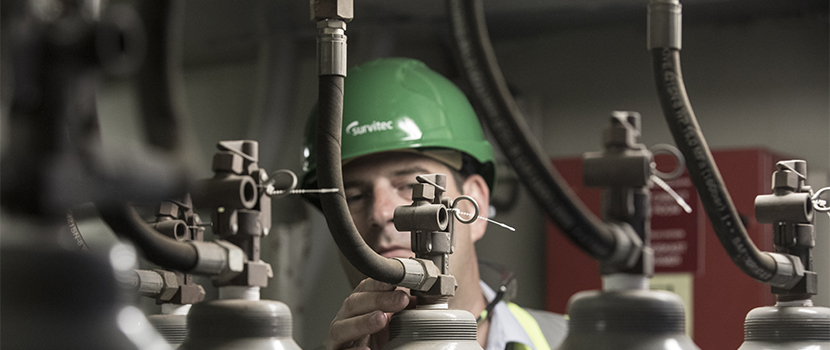CO2 hoses and fittings: these seemingly simple components are the unsung heroes behind the smooth operation of numerous industrial, commercial, and domestic processes. Whether it’s powering beverage dispensers, supporting critical applications in healthcare, or facilitating welding operations, CO2 hoses and fittings play a pivotal role in diverse sectors.
In this comprehensive guide, we’ll delve into the intricacies of CO2 hoses and fittings, exploring their functions, types, applications, maintenance, and the importance of choosing the right ones for specific needs.
Understanding CO2 Hoses and Fittings
CO2 hoses and fittings are integral components of systems that utilize carbon dioxide, a versatile gas with countless industrial applications. These components facilitate the safe and efficient transfer of CO2 from its source to the intended destination, ensuring seamless operations across various industries.
Types of CO2 Hoses and Fittings
Hoses
- Reinforced Rubber Hoses: Known for their flexibility and durability, reinforced rubber hoses are commonly used in applications where moderate pressure and temperature are involved.
- Braided Stainless Steel Hoses: Ideal for high-pressure applications, braided stainless steel hoses offer excellent strength and resistance to corrosion.
- Thermoplastic Hoses: These lightweight hoses are suitable for applications requiring flexibility, chemical resistance, and ease of handling.
Fittings
- Quick Disconnect Fittings: Offering convenience and ease of use, quick disconnect fittings enable rapid connection and disconnection of hoses.
- Compression Fittings: These fittings create a tight seal by compressing the hose against a fitting body, making them suitable for high-pressure applications.
- Barbed Fittings: Featuring barbs that grip the inner diameter of the hose, barbed fittings provide a secure connection in low-pressure applications.
Importance of Quality and Compatibility
The quality and compatibility of CO2 hoses and fittings are paramount to ensuring optimal performance, efficiency, and safety. Using inferior or incompatible components can lead to leaks, inefficiencies, and safety hazards, jeopardizing both operations and personnel.
Investing in high-quality materials and ensuring proper compatibility with the system’s requirements is crucial to mitigating risks and maximizing the lifespan of CO2 hoses and fittings. By prioritizing quality and compatibility, businesses can minimize downtime, reduce maintenance costs, and enhance overall safety.
Tips for Optimal Performance and Safety
When it comes to optimizing the performance and safety of CO2 hoses and fittings, several key tips can make a significant difference:
- Regular Inspection: Schedule routine inspections to detect any signs of wear, damage, or deterioration in your CO2 hoses and fittings. Look for cracks, leaks, bulges, or other abnormalities that could compromise their integrity.
- Proper Installation: Ensure that your CO2 hoses are correctly connected to fittings and that all connections are tight and secure. Improper installation can lead to leaks or inefficiencies, so take the time to follow manufacturer guidelines carefully.
- Temperature and Pressure Management: Pay attention to the temperature and pressure ratings of your CO2 hoses and fittings. Exceeding these limits can lead to catastrophic failure, so always operate within the recommended parameters.
- Use of Accessories: Consider using accessories such as clamps, guards, and sleeves to protect your CO2 hoses from abrasion, kinking, or other forms of damage. These simple additions can significantly extend the lifespan of your hoses and fittings.
- Training and Education: Provide comprehensive training to personnel responsible for handling CO2 hoses and fittings. Ensure they understand proper installation procedures, maintenance protocols, and safety precautions to minimize risks and maximize efficiency.
- Emergency Response Plan: Develop an emergency response plan that outlines procedures for dealing with leaks, spills, or other incidents involving CO2 hoses and fittings. Ensure all relevant personnel are familiar with the plan and know how to respond effectively in case of an emergency.
By implementing these tips, you can optimize the performance and safety of your CO2 hoses and fittings, minimizing downtime, reducing maintenance costs, and ensuring the smooth operation of your systems.
Conclusion
In conclusion, CO2 hoses and fittings are indispensable components in various applications, ranging from beverage dispensers to healthcare equipment. By understanding their functions, types, importance, and maintenance requirements, businesses can ensure efficient and safe operations.
Remember, when it comes to CO2 hoses and fittings, quality and compatibility are non-negotiable. By investing in high-quality components, adhering to proper installation and maintenance practices, and prioritizing safety, businesses can optimize performance, minimize risks, and achieve long-term success in their operations.

